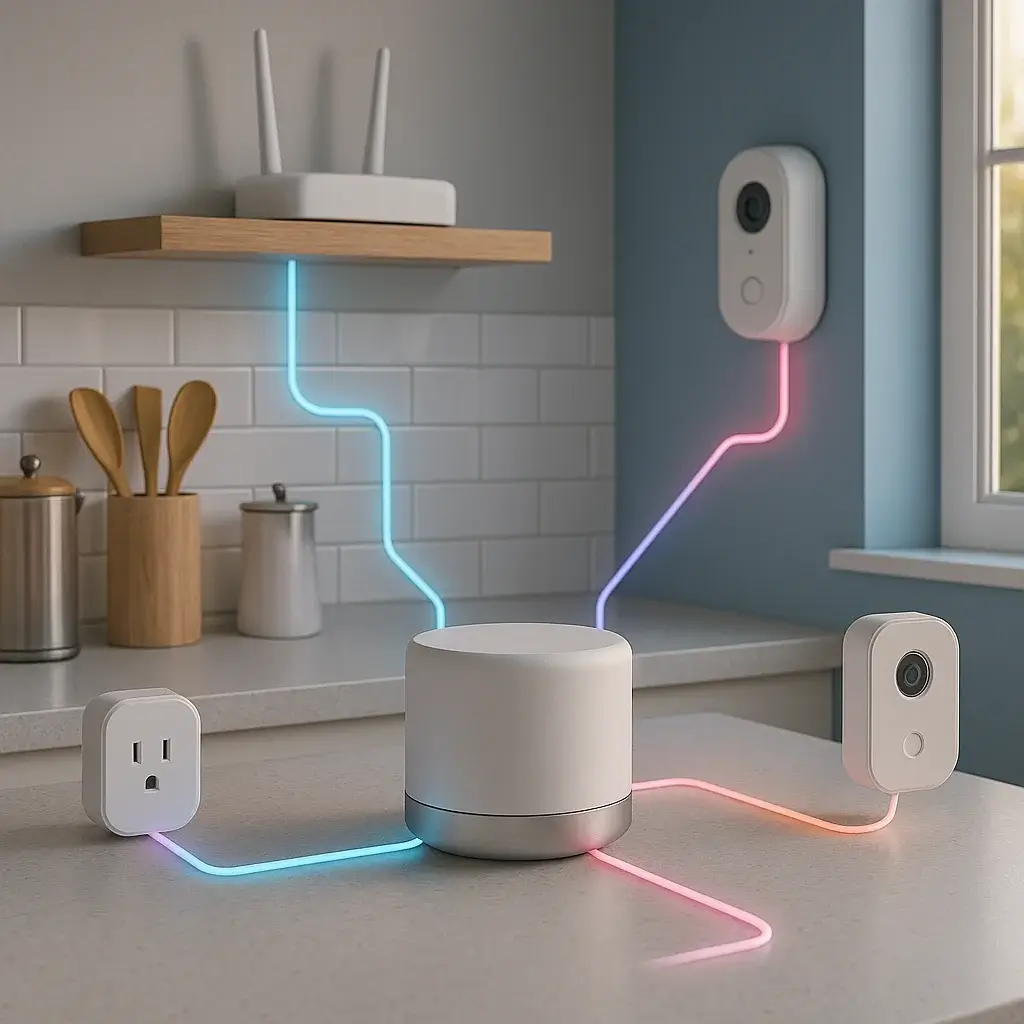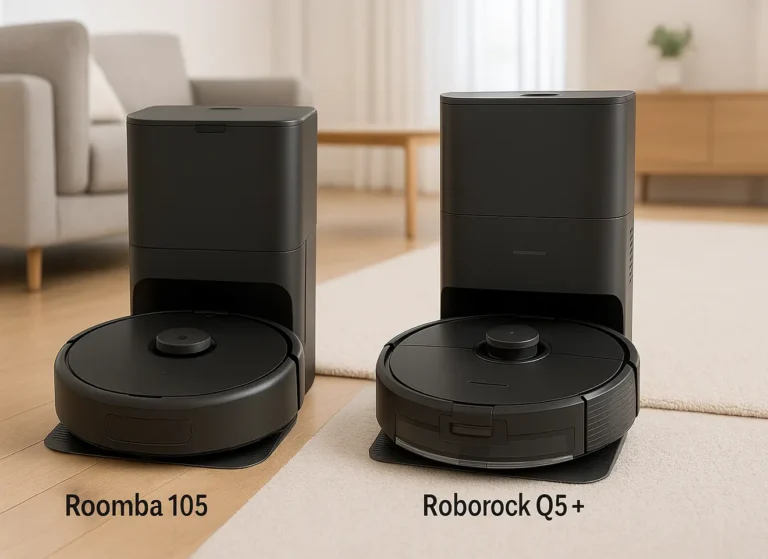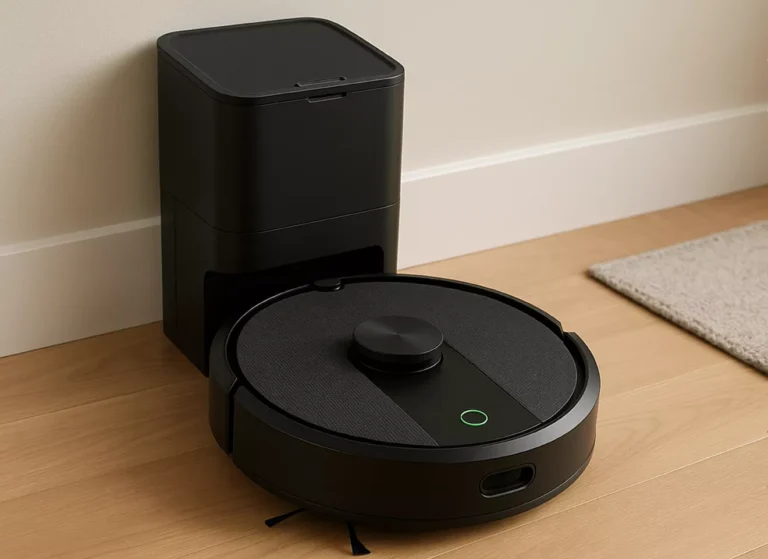What the Matter Smart Home Standard Means for Your Connected Devices
By Alex Rivera

A decade ago, setting up a connected house felt like assembling furniture without instructions. Zigbee bulbs wanted one hub, Z‑Wave locks demanded another, and Wi‑Fi cameras insisted on their own cloud sign‑in. The result was a junk drawer of apps and passwords that scared many people away from home automation. Enter the Matter smart home standard, an open‑source protocol managed by the Connectivity Standards Alliance and championed by Amazon, Apple, Google, Samsung, Ikea, and more than three hundred additional partners. Matter promises a future in which any certified gadget—no matter who built it—works with every major platform, ending years of frustrating incompatibility and turning setup into a one‑scan affair.
Why the Smart Home Needed a Common Language
Early smart homes spoke competing dialects. You could dim a living‑room lamp by voice, yet had to reach for your phone to unlock the door because brands refused to cooperate. The Matter smart home specification repairs that chaos by publishing a shared data model, a uniform security certificate, and a single onboarding ritual. Scan the QR code, the controller verifies an encrypted credential, and the device joins every ecosystem you approve. According to independent tests cited by The Verge in July 2025, average Matter installations now finish in under sixty seconds—an eighty‑percent speed boost over pre‑Matter setups.
How Matter Moves Data Around Your House
Matter rides on two digital highways. High‑bandwidth gadgets such as video doorbells, televisions, and electric‑vehicle chargers travel on Ethernet or Wi‑Fi. Low‑power sensors and switches join a Thread mesh that heals itself and whispers packets while sipping coin‑cell batteries for years. Fourth‑generation Echo speakers, HomePod mini units, Nest Hub displays, and Ikea’s Dirigera hub all act as Thread border routers, bridging that mesh to the main network. Because automation now runs locally, a sunrise routine still triggers even if your internet drops, and privacy improves because commands never leave the walls unless you invite them.
Matter 1.3: Expanding Beyond Bulbs and Plugs
Matter launched in late 2022 covering lights, plugs, locks, thermostats, and shades. Version 1.2 widened support to robot vacuums, refrigerators, smoke alarms, and dishwashers. Matter 1.3, released in April 2025, pushed the Matter smart home frontier further with three headline upgrades. First, energy‑reporting clusters let outlets and appliances stream real‑time watt data into Alexa, Google Home, and Apple Home dashboards. Second, water‑valve control isolates burst pipes within seconds of a leak, a feature several insurers now reward with premium discounts. Third, native EV‑charger management schedules amperage around time‑of‑use utility rates. LG and Bosch shipped beta firmware within weeks, and Tesla confirmed its next Wall Connector will arrive Matter‑enabled.
Benefits for Residents, Renters, and Brands
For residents, the chief victory is freedom. Swap Alexa for Apple next year and the same Nanoleaf bulbs, Eve sensors, and Yale locks still obey every scene. Local control slashes cloud lag, satisfies California’s privacy law, and aligns neatly with Europe’s GDPR. Renters love that Thread signals penetrate brick better than five‑gigahertz Wi‑Fi, letting peel‑and‑stick sensors remain online without adding repeaters. A Parks Associates survey published in May 2025 found that sixty percent of tenants prefer rentals with pre‑installed smart gear, showing how a Matter smart home can raise property value without remodeling.
Manufacturers benefit too. Instead of writing three separate integrations, vendors certify once and let each platform parse the shared metadata. ABI Research projects a twenty‑percent reduction in development hours for mid‑tier brands by 2027. The trade‑off is that bleeding‑edge concepts—say, robotic litter boxes—must wait until the spec embraces them, yet the Alliance now issues updates twice a year, so innovations rarely stay parked long.

Building Your Matter Smart Home in 2025
Lights remain the friendliest entry point. A two‑pack of Nanoleaf Essentials Thread bulbs lists at $29.99 on Amazon today, and each uses under nine watts at full brightness. Pair those bulbs with a $44 Echo Pop and you gain both a Matter controller and a Thread border router. Smart plugs come next. TP‑Link’s KP125M sells for $24.99 and exposes live watt draw that can shut space heaters off automatically when they spike.
Security joins the party through retrofits. Aqara’s U200 deadbolt module, priced at $189, swaps only the interior thumb‑turn, granting keypad, NFC, and Apple Home Key access without risking landlord wrath. Eve Thread contact sensors cling to windows with magnets and run two years on a single CR2032 battery. Porch protection is equally simple—Ring’s Battery Doorbell Plus adheres with an optional plate, leaves no holes on move‑out day, and still triggers lighting scenes inside a Matter smart home via local routines.
Philips Hue’s A19 Starter Kit recently dropped to $97.49, its lowest price on record. Because bulbs screw into fixtures landlords already supply, installation is literally a twist away. Add the squishy Hue Smart Button beside the sofa and movie‑night ambience becomes a thumb click instead of a phone scramble.
Energy and Water Management: The Sleeper Features
Matter 1.3’s watt‑streaming cluster turns idle outlets into data faucets. Plug your window AC into a certified socket and watch usage spikes surface in Apple Home’s Energy tab. Schedule cooling during off‑peak hours and shave double‑digit percentages off midsummer bills. The U.S. Department of Energy estimates nationwide savings could top 4.5 terawatt‑hours annually if one in five homes adopts Matter‑based scheduling.
Water protection follows a similar path. Smart valves paired with under‑sink leak sensors can isolate a burst pipe in under ten seconds, trimming repair costs from thousands of dollars to a damp towel. Several insurers already knock premiums down when policyholders install Matter‑certified shut‑offs—a small bonus that sweetens the math for cautious owners.
A Week Inside a Matter Apartment
To see theory in action, spend seven lively days in a 600‑square‑foot Chicago walk‑up equipped only with Matter gear. Day one, the resident unboxes two Nanoleaf bulbs, an Eve Motion sensor, and a TP‑Link outlet. Setup takes twelve minutes, including coffee breaks. Day two, a Ring Battery Doorbell Plus greets grocery deliveries and pings the Echo Pop when packages arrive. Day three, a Thread contact sensor triggers a sunrise scene and a coffee maker plugged into a KP125M. Day four, the energy dashboard reveals the AC’s power draw, suggesting a cheaper overnight schedule. Day five, the Aqara U200 lock auto‑secures when the resident’s phone leaves the geofence, and Eve sensors confirm windows are closed. Day six, a water sensor under the sink closes a Matter valve instantly, sending an alert that saves a $1,000 deductible. Day seven ends with a movie routine that dims bulbs, locks doors, and cues the robot vacuum—hands‑free comfort that feels positively sci‑fi.
Challenges and How to Dodge Them
No standard is flawless. Retailers sometimes label devices “Matter‑ready” months before firmware ships; always confirm certification on the Alliance database before buying. Multi‑admin—the feature that lets one bulb live in multiple apps—occasionally syncs scenes in only one direction. Interface guidelines scheduled for Matter 1.4, due November 2025, should smooth that wrinkle. Network load can rise as every Wi‑Fi lamp claims an IP address, so lean on Thread where possible and keep controllers on Ethernet or Wi‑Fi 6E. Cameras remain outside the spec until 1.4 finalizes secure video, so Ring or HomeKit Secure Video still handle streams, yet those cameras already trigger automation locally through motion or doorbell events.
Future Roadmap and Industry Momentum
The Alliance has previewed candidate device types for Matter 1.4, including pet feeders, robot lawn mowers, and routers that double as Thread integrators. Looking further out, analysts expect solar inverters, health monitors, and zoned HVAC vents by 2026. Best Buy’s Totaltech plan now includes Matter installation, Lowe’s sells renter‑friendly kits with adhesive mounts, and Duke Energy is piloting automatic rate‑shifting through EV‑charger clusters. Accessibility advocates cheer multi‑admin because seniors can keep familiar Alexa prompts while caregivers monitor via Google Home. The AARP Tech Council argues that motion‑based lighting and voice thermostat readouts will help older adults age safely in place, and the Alliance is drafting accessibility profiles for Matter 1.5 to add high‑contrast modes and spoken setup cues.
Final Reflection: A Home That Listens to You, Not the Other Way Around
The Matter smart home began as an unlikely handshake among fierce competitors and is maturing into the universal language our living spaces craved. Lights pair in seconds, locks register across apps, and appliances share energy stats without subscription traps. Cameras and richer scenes are queued for the next release, but the trajectory is clear: buy what you love, scan once, control it anywhere. Whether you rent a studio or manage a multistory house, adopting a Matter smart home today invites you to build a flexible ecosystem that grows alongside your life and never boxes you into one brand.
Related posts:
- 10 Cheap Smart Home Devices to Automate Your Home on a Budget The 10 Best Cheap Smart Home Devices (No Junk, Just...
- Smart Home Devices for Seniors: Safe and Easy Living Smart Home Devices for Seniors: Safe and Easy Living by...
- Smart Home Devices for Renters: No‑Drill Upgrades Smart Home Devices for Renters: No Drill Upgrades by EasySmartHomeGuide...
- THE ONLY 10 SMART DEVICES YOU REALLY NEED FOR YOUR RENTAL HOME (2025 EDITION) The Only 10 Smart Home Devices for Renters You Really...



